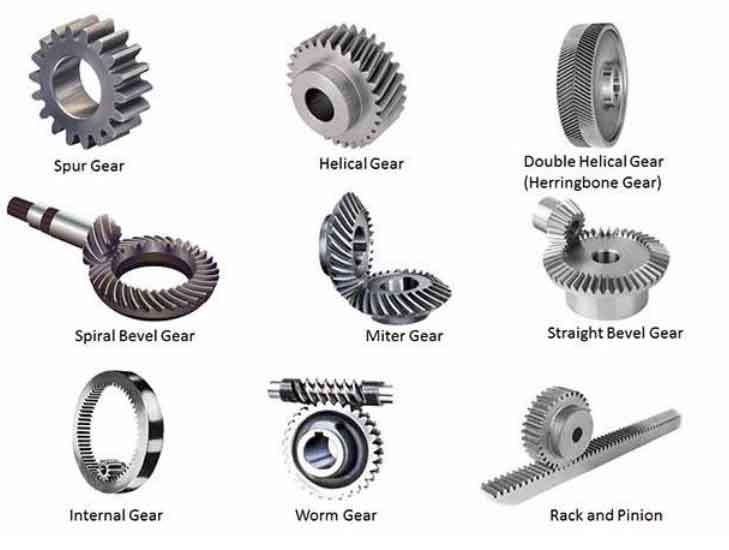When it comes to gear types, helical gears and worm gears are two distinct options with unique characteristics and applications. Let’s compare helical gears and worm gears based on several key factors:

- Gear Design: Helical gears have angled teeth that are cut in a helix shape around the gear circumference. This design allows for gradual tooth engagement, resulting in smoother operation and reduced noise compared to spur gears. In contrast, worm gears consist of a cylindrical screw-like gear (worm) that meshes with a toothed wheel (worm gear). The helical gear design is more common and versatile, while worm gears are specialized for specific applications.
- Power Transmission: Helical gears are known for their high power transmission efficiency. The angled teeth of helical gears enable more teeth to be engaged simultaneously, distributing the load over a larger contact area. On the other hand, worm gears typically have lower power transmission efficiency due to higher frictional losses caused by the sliding action between the worm and the worm gear.
- Gear Ratios: Helical gears can achieve a wide range of gear ratios due to their versatile design. They are commonly used in applications where precise speed and torque control are required. Worm gears, on the other hand, are known for their ability to provide high gear reduction ratios. They are often used in applications that require significant speed reduction and high torque output.
- Axial Thrust: Helical gears generate axial thrust due to the helical tooth arrangement. Proper measures, such as thrust bearings or herringbone gear configurations, are required to counteract this thrust. Worm gears, however, naturally eliminate axial thrust because of the sliding contact between the worm and the worm gear. This makes worm gears more suitable for applications where axial thrust must be minimized.
- Backdriving: Backdriving refers to the ability of a gear system to be driven in the opposite direction by the output load. Helical gears have a low tendency to backdrive, making them suitable for applications where reverse motion needs to be prevented. In contrast, worm gears have a high self-locking capability, meaning the worm gear can hold its position and prevent backdriving. This makes worm gears advantageous in applications where a gear system must maintain a fixed position.
- Lubrication: Helical gears typically require adequate lubrication to minimize friction and wear. They benefit from various lubrication methods, such as oil bath or forced lubrication systems. Worm gears, on the other hand, often operate under partial lubrication conditions due to the sliding action between the worm and the worm gear. Proper lubrication and cooling measures are crucial to ensure the longevity and performance of worm gear systems.
In summary, helical gears offer advantages such as smoother operation, higher power transmission efficiency, and a wider range of gear ratios. They are versatile and commonly used in various applications. Worm gears excel in high gear reduction applications, offer inherent self-locking capabilities, and eliminate axial thrust. Selecting between helical gears and worm gears depends on factors such as the specific application requirements, power transmission efficiency, gear ratio needs, and the presence of axial thrust or backdriving considerations.
